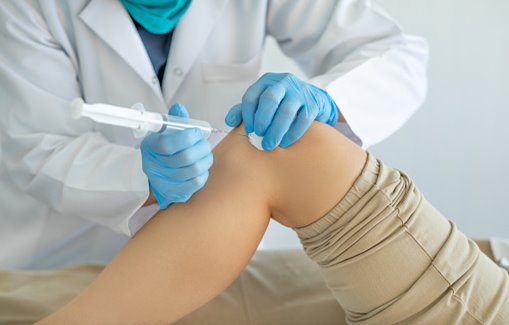Botox Injections for Fibromyalgia?
Learn whether botox may help fibromyalgia pain.
Question: Have you heard of Botox injections for fibromyalgia? If so, what are they and how do they work?
Answer: Botulinum toxin type A (Botox) is produced by a bacterium called clostridium botulinum. The U.S. military originally purified the toxin about 30 years ago as a potential nerve agent. More recently, the toxin, which blocks neuromuscular transmission, has been used for medicinal purposes.
When injected in small quantities, Botox causes selective weakening and paralysis of muscles, thereby alleviating spasms and pain. Although the drug is approved only for certain problems, doctors have used it to treat the muscular rigidity seen in various medical conditions including the pain of a muscular condition called myofascial pain syndrome. In fact, it was the successful use of Botox in some people with severe myofascial pain syndrome that led doctors to try it for fibromyalgia.
Although its use in fibromyalgia is not well studied, Botox injections have been touted as the new “miracle cure” for fibromyalgia. There are reports of patients with fibromyalgia getting some relief of their tender points that lasts up to three to four months. Even though muscle pain is one of the major features of fibromyalgia, there are many other symptoms of the condition not helped by Botox.
If you decide to try Botox, expect to wait about eight days before you see results. The most relief occurs at about three weeks, and the injections can be repeated every three to four months. But be careful not to get them more often. Too frequent injections may cause you to develop immunity to the injections. Some patients who have received too much Botox, depending on the location of the injections, have developed facial and eyelid drooping, bruising, jaw weakness, headache, neck or back pain, and back weakness. Such symptoms last until the injections wear off.
When administered correctly, Botox appears to be safe. But the drug is expensive, costing about $400 per injection.
James McKoy, MD
Rheumatologist (former)
Kaiser Permanente Moanalua Medical Center
Moanalua, Hawaii
- OnabotulinumtoxinA (Botox®, Botox Cosmetic®)
- Botox® - Cervical dystonia, severe primary axillary hyperhidrosis, strabismus, blepharospasm, neurogenic detrusor overactivity, chronic migraine, upper limb spasticity
- Botox Cosmetic® - Moderate to severe glabellar lines, moderate to severe lateral canthal lines, known as crow’s feet
- AbobotulinumtoxinA (Dysport®) - Upper and lower limb spasticity, cervical dystonia, and moderate-to-severe glabellar lines in adults; it is also indicated for lower limb spasticity in children aged 2 years or older
- IncobotulinumtoxinA (Xeomin®) - Upper limb spasticity, cervical dystonia, blepharospasm, moderate to severe glabellar lines, chronic sialorrhea
- RimabotulinumtoxinB (Myobloc®) - Cervical dystonia

Stay in the Know. Live in the Yes.
Get involved with the arthritis community. Tell us a little about yourself and, based on your interests, you’ll receive emails packed with the latest information and resources to live your best life and connect with others.



